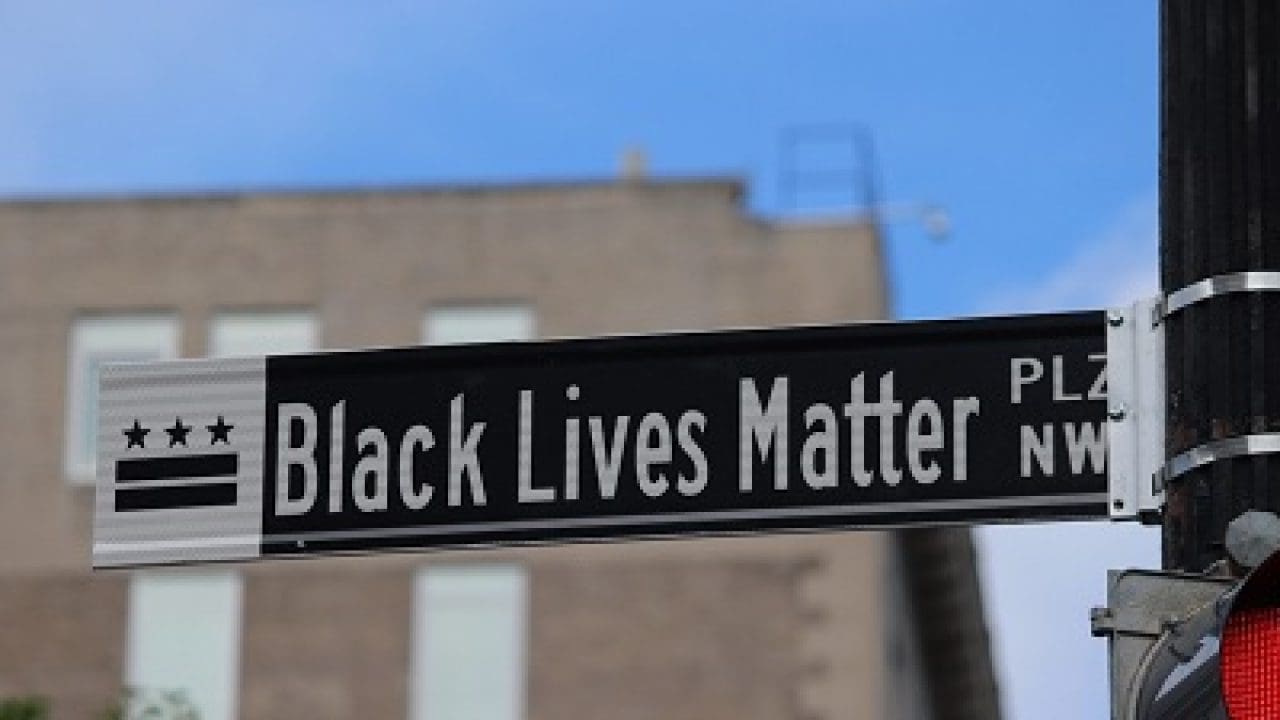The Short-Lived Black Lives Matter Plaza: A Case Study In Political Change

Table of Contents
The Genesis of Black Lives Matter Plaza
The Catalyst: George Floyd's Murder and Subsequent Protests
The murder of George Floyd on May 25, 2020, sparked unprecedented protests across the United States and globally. Images of Floyd's death under the knee of a Minneapolis police officer ignited a firestorm of outrage and grief, fueling a national conversation – and intense debate – regarding systemic racism, police brutality, and racial inequality. These protests, demanding justice and systemic change, were some of the largest in US history. Washington, D.C., was no exception, witnessing massive demonstrations calling for an end to police violence against Black people.
Political Response and the Decision to Rename
In response to the widespread protests and the urgent calls for racial justice, Washington, D.C. Mayor Muriel Bowser took a significant step. She ordered the renaming of a two-block stretch of 16th Street NW, in front of the White House, as "Black Lives Matter Plaza." This action was a symbolic gesture of solidarity with the Black Lives Matter movement and a recognition of the profound impact of the protests.
- Key figures: Mayor Muriel Bowser, D.C. Council members, and Black Lives Matter activists played crucial roles in the decision-making process.
- Public reaction: The renaming was met with a mix of support and criticism. While many praised Bowser's action as a powerful symbol of solidarity, others questioned its effectiveness as a means of achieving meaningful change.
- Physical manifestation: The renaming was physically manifested through the painting of large yellow letters spelling out "Black Lives Matter" on the street itself. This became an instantly recognizable visual representation of the movement.
The Significance and Symbolism of Black Lives Matter Plaza
A Symbol of Solidarity and Resistance
The Black Lives Matter Plaza quickly became a powerful visual representation of the movement's goals. The prominent location, directly in front of the White House, amplified its message, turning a section of the city into a focal point for the ongoing struggle for racial justice and equality. The yellow lettering served as a stark and unwavering statement in the heart of the nation's capital.
A Space for Protest and Dialogue
Beyond its symbolism, the plaza also became a physical space for continued protest, demonstration, and community dialogue. It served as a gathering place for activists, organizers, and community members to express their demands, share their experiences, and engage in conversations about systemic racism.
- Events and gatherings: The plaza hosted numerous rallies, vigils, and peaceful protests related to racial justice and other social justice issues.
- Media coverage: The plaza received extensive national and international media coverage, further amplifying its symbolic importance and the message of the Black Lives Matter movement.
- Broader implications: The creation of the plaza had implications far beyond Washington, D.C., inspiring similar symbolic acts of solidarity in other cities across the country and globally.
The Removal of Black Lives Matter Plaza and its Implications
The Reasons Behind the Removal
In August 2020, Mayor Bowser ordered the removal of the "Black Lives Matter" street painting, sparking considerable controversy. While the official explanation cited the need for street repairs and the desire to create a more permanent memorial, the timing and the decision itself were met with criticism from some quarters. Some interpreted the removal as a backtracking on the initial gesture of solidarity, suggesting a waning political will to address the root causes of racial inequality.
The Controversy and Public Reaction
The decision to remove the street painting generated significant debate. Supporters of the removal argued that it was a necessary step for practical reasons and that other, more permanent memorials could be created. Critics, however, viewed the removal as a sign of disrespect towards the Black Lives Matter movement and a symbolic erasure of its message. The differing opinions highlight the complex political landscape surrounding racial justice issues.
- Arguments for and against removal: Debates revolved around the balance between symbolism, practicality, and the ongoing need for concrete action to address racial inequality.
- Long-term effects: While the physical painting is gone, the Black Lives Matter Plaza remains a potent symbol in the historical record of the movement.
- Impact on the Black Lives Matter movement: The removal did not diminish the momentum of the broader Black Lives Matter movement, but it did underscore the challenges of translating symbolic gestures into sustained political change.
Conclusion
The short-lived Black Lives Matter Plaza serves as a potent reminder of the fleeting nature of symbolic gestures in the face of persistent systemic issues. While its physical presence may be gone, its legacy as a powerful symbol of protest, solidarity, and the ongoing fight for racial justice remains. Understanding the complexities surrounding the Black Lives Matter Plaza provides valuable insight into the dynamic relationship between political action, public discourse, and the enduring struggle for racial equality. Further research into similar movements and symbolic actions can offer a more comprehensive understanding of the efficacy and limitations of such gestures in achieving lasting change. To learn more about the lasting impacts of similar movements and the ongoing fight for racial justice, explore further resources on the Black Lives Matter movement and its ongoing efforts. The story of the Black Lives Matter Plaza, and its eventual removal, continues to be a significant case study in understanding the complexities of political symbolism and the enduring fight for racial justice.

Featured Posts
-
 La Dispute Ardisson Baffie Machisme Accusations Et Contre Accusations
May 26, 2025
La Dispute Ardisson Baffie Machisme Accusations Et Contre Accusations
May 26, 2025 -
 Carolina Country Music Fest 2025 Tickets Gone
May 26, 2025
Carolina Country Music Fest 2025 Tickets Gone
May 26, 2025 -
 All Star Weekend A Look At The Casting And The Subsequent Backlash
May 26, 2025
All Star Weekend A Look At The Casting And The Subsequent Backlash
May 26, 2025 -
 Martin Compstons Glasgow Thriller A Cinematic Shift From Scottish Charm To La Noir
May 26, 2025
Martin Compstons Glasgow Thriller A Cinematic Shift From Scottish Charm To La Noir
May 26, 2025 -
 Live Streaming Moto Gp Inggris 2025 Trans7 And Spotv Jadwal And Update Klasemen
May 26, 2025
Live Streaming Moto Gp Inggris 2025 Trans7 And Spotv Jadwal And Update Klasemen
May 26, 2025
Latest Posts
-
 Vivian Musk Daughter Of Elon Musk Makes Modeling Debut
May 30, 2025
Vivian Musk Daughter Of Elon Musk Makes Modeling Debut
May 30, 2025 -
 The Amber Heard Twins Addressing The Speculation About Elon Musks Role
May 30, 2025
The Amber Heard Twins Addressing The Speculation About Elon Musks Role
May 30, 2025 -
 From Tesla To Runway Vivian Musks Modeling Debut And Public Response
May 30, 2025
From Tesla To Runway Vivian Musks Modeling Debut And Public Response
May 30, 2025 -
 Amber Heards Twins And The Elon Musk Embryo Dispute A Deep Dive
May 30, 2025
Amber Heards Twins And The Elon Musk Embryo Dispute A Deep Dive
May 30, 2025 -
 The Embryo Dispute And The Birth Of Amber Heards Twins A Deeper Look
May 30, 2025
The Embryo Dispute And The Birth Of Amber Heards Twins A Deeper Look
May 30, 2025
